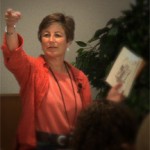
Stephanie Riven
Lessons from Harvard's Arts in Education Program
Posted by May 10, 2011

Stephanie Riven
I have just spent three months as a visiting practitioner at the Harvard Graduate School of Education/Arts in Education (AIE) Program. Steve Seidel, director of AIE, extended an invitation to me to study, teach, and serve as a resource for students during the semester.
So what did I discover after three months of talking and meeting with young people, auditing classes, and attending forums, lectures, and workshops on arts education, education reform, and leadership?
Three takeaways, among many, include:
1) With changes in the economy, the influence of technology and the expansion of entertainment and leisure options, there is a need for bold ideas and creative leadership in shaping a new vision to move the arts and arts education forward. It is our young leaders who possess many of these ideas. Edward Clapp’s collection of essays from emerging leaders in the field entitled 20UNDER40 is quite simply one of the most exciting and hopeful set of ideas for our field that I encountered. I encourage everyone to get your hands on a copy of this book and pass it around to your staff and board members to create an intergenerational dialogue about how to conceive of, program, and sustain the arts and arts education in the future.
Read More





















